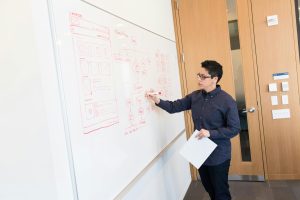Understanding Differentiated Instruction to Meet Diverse Needs
In today’s diverse and ever-changing educational landscape, teachers face the challenge of meeting the needs of a wide range of students in their classrooms. With varying learning styles, abilities, and backgrounds, a one-size-fits-all approach to instruction is no longer effective. That’s where differentiated instruction comes in – a student-centered teaching approach that aims to cater to the individual needs of each learner. In this article, we will delve into the concept of differentiated instruction and how it can be used to meet the diverse needs of students in the classroom.
What is Differentiated Instruction?
At its core, differentiated instruction is a flexible teaching framework that allows educators to adjust their teaching methods and lesson plans to meet the needs of individual students. It is an approach that recognizes that no two students are the same and aims to provide each learner with the best opportunity to succeed by building on their strengths and addressing their weaknesses.
Why is it Important?
The traditional classroom model of one teacher teaching a large group of students has become increasingly insufficient in meeting the needs of a diverse student population. With learners coming from various backgrounds and with different learning styles, a teacher-focused approach often leaves many students behind. This is where differentiated instruction becomes crucial – it seeks to reach every student by providing them with the appropriate level of challenge and support.
The Principles of Differentiated Instruction
Differentiated instruction is based on three core principles – readiness, interest, and learning profile.
Readiness
Readiness refers to a student’s current knowledge and skill level. This could vary greatly among students, even within the same grade or class. Differentiated instruction takes into account a student’s readiness by providing them with instruction that is appropriate for their current level. This could mean challenging advanced learners with more complex tasks or providing additional support for struggling students.
Interest
Students are more likely to be engaged and motivated in their learning when it aligns with their interests. Differentiated instruction considers the interests of students when designing lessons and activities, making the learning experience more meaningful and relevant to them.
Learning Profile
Each student has their unique way of learning, whether it’s through visual, auditory, or kinesthetic methods. Differentiated instruction takes this into account and offers a variety of ways for students to engage with the material, ensuring that each student can access the content in a way that best suits their learning profile.
Implementing Differentiated Instruction in the Classroom
Now that we understand the fundamentals of differentiated instruction let’s explore how it can be applied in the classroom.
Getting to Know Your Students
To successfully differentiate instruction, it’s essential to know your students on an individual level. This includes understanding their learning styles, interests, strengths, and weaknesses. Taking the time to get to know your students will allow you to design instruction that caters to their needs.
Flexible Grouping
Grouping students together can be an effective way to differentiate instruction, as it allows you to provide targeted instruction to smaller groups. You can group students based on their readiness, interest, or learning profile, and change the groups as needed.
Varied Assessment Methods
When assessing student learning, it’s crucial to use a range of methods that cater to different learning styles. This could include traditional tests, projects, presentations, or hands-on activities. Using varied assessment methods ensures that every student has the opportunity to demonstrate their understanding in a way that aligns with their strengths.
Adapting Instruction
Teachers must be able to adapt their instruction to suit the needs of their students. This could involve providing additional support to struggling students, challenging advanced learners with more complex tasks, or modifying activities to cater to different learning styles. Differentiated instruction requires creativity and flexibility to meet the needs of all students.
The Results of Differentiated Instruction
When implemented effectively, differentiated instruction has shown to have a positive impact on student achievement, engagement, and motivation. By acknowledging and addressing the diverse needs of students, teachers can create a supportive learning environment where all students can thrive.
In conclusion, understanding differentiated instruction is essential for teachers looking to meet the diverse needs of their students in the classroom. By incorporating the principles of readiness, interest, and learning profile, and implementing strategies such as getting to know your students, flexible grouping, and varied assessment methods, educators can provide personalized instruction that caters to the individual needs of each student.











